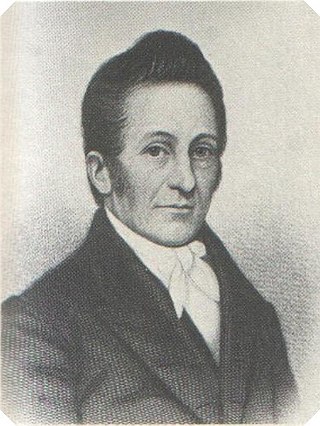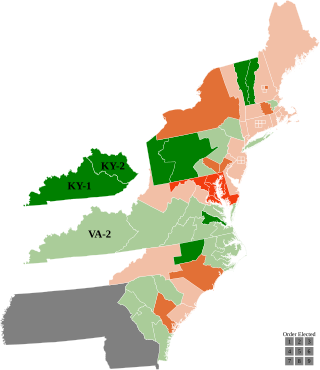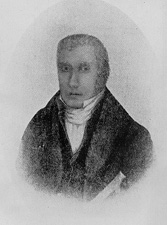
Vermont has been represented in the United States House of Representatives by a single at-large congressional district since the 1930 census, when the state lost its second seat, obsoleting its 1st and 2nd congressional districts. There were once six districts in Vermont, all of which were eliminated after various censuses.

Henry Laurens Dawes was an attorney and politician, a Republican United States Senator and United States Representative from Massachusetts. He is notable for the Dawes Act (1887), which was intended to stimulate the assimilation of Native Americans by ending the tribal government and control of communal lands. Especially directed at the tribes in Indian Territory, it provided for the allotment of tribal lands to individual households of tribal members, and for their being granted United States citizenship. This also made them subject to state and federal taxes. In addition, extinguishing tribal land claims in this territory later enabled the admission of Oklahoma as a state in 1907.

Richard Skinner was an American politician, attorney, and jurist who served as the ninth governor of Vermont.
The 1816–17 United States House of Representatives elections were held on various dates in various states between April 30, 1816 and August 14, 1817. Each state set its own date for its elections to the House of Representatives before the first session of the 15th United States Congress convened on December 1, 1817. The size of the House increased to 184 after Indiana and Mississippi achieved statehood.

The 1812–13 United States House of Representatives elections were held on various dates in various states between August 3, 1812, and April 30, 1813. Each state set its own date for its elections to the House of Representatives before the first session of the 13th United States Congress convened on May 24, 1813. They coincided with James Madison being re-elected president.

The 1790–91 United States House of Representatives elections were held on various dates in various states between April 27, 1790, and October 11, 1791. Each state set its own date for its elections to the House of Representatives before or after the first session of the 2nd United States Congress convened on October 24, 1791. This was the first midterm election cycle, which took place in the middle of President George Washington's first term. The size of the House increased to 67 seats after the new state of Vermont elected its first representatives.

William Adams Palmer was an American lawyer and politician. A prominent of the Anti-Masonic Party in the 1830s, he was most notable for his service as a United States Senator from Vermont (1818–1825) and the 13th governor of Vermont (1831–1835).

Daniel Azro Ashley Buck was an American lawyer and politician in the U.S. state of Vermont. He served as a U.S. Representative from Vermont and as Speaker of the Vermont House of Representatives.

James Fisk was an American politician from Vermont. He served in the House of Representatives and the United States Senate.
Mark Richards was an American politician. He served as a member of the United States House of Representatives from Vermont and as the ninth lieutenant governor of Vermont.

Samuel Chandler Crafts was a United States representative, Senator and the 12th governor of Vermont.

William Slade Jr. was an American Whig and Anti-Masonic politician. He served as a U.S. Representative from Vermont from 1831 to 1843, where he was an outspoken opponent of slavery. He was the 17th governor of Vermont.
Daniel Buck was an American lawyer and politician. He served as a United States representative from Vermont.

Rollin Carolas Mallary was an American lawyer and politician. He served as U.S. Representative from Vermont.

Nathaniel Chipman was an American politician who served as a United States Senator from Vermont and Chief Justice of the Vermont Supreme Court. A Yale College graduate and Continental Army veteran of the American Revolution, Chipman became a prominent attorney and advocate for Vermont statehood. When Vermont was admitted to the Union, he served as the first judge of the United States District Court for the District of Vermont.

Samuel Prentiss was an associate justice and chief justice of the Vermont Supreme Court, a United States senator from Vermont and a United States district judge of the United States District Court for the District of Vermont.

Vermont gained two seats after the 1810 census. Rather than re-district, however, Vermont replaced its districts with a single at-large district. It would continue to use an at-large district in 1814, 1816, and 1818, then one more time in 1822.

Vermont held its elections September 6, 1814. Voters swung from one party to the other. The margins were close, actually, but to toss the entire six-member delegation out of office.

The 1808 United States presidential election in Vermont took place between November 4 and December 7, 1808, as part of the 1808 United States presidential election. The state legislature chose six representatives, or electors to the Electoral College, who voted for President and Vice President.

The 1816 United States presidential election in Vermont took place between November 1 to December 4, 1816, as part of the 1816 United States presidential election.














